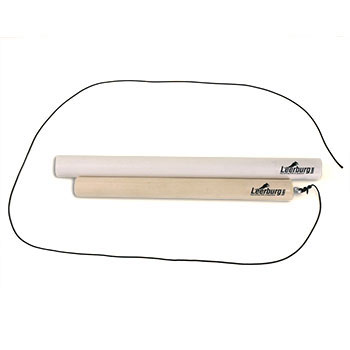April 29, 2011
How would I approach the problem of chasing larger vehicles with the electric collar?
Full Question:
Hi,I recently purchased a Dogtra e collar from you along with your training video. We have a dominant 22 month old male Australian Shepherd who is fairly well obedience trained, but needs work in a couple of areas. Before we begin the e collar training, I wanted to get your advice.
He has very strong prey drive, and though we have trained him to "leave" cars that pass by he is intensely provoked by the mailtruck, UPS, FedEX, or any loud truck that goes by. The prong collar has helped this slightly, but we are hoping to use the e collar to correct this.
How would you suggest approaching this problem with the e collar?
The other issue we are hoping to address is what we call "bossy barking." We have tried all the traditional ways to curb it, ignoring it, leash corrections, etc... but to no avail. We are hoping to use the e collar to curb this behavior as well. Your thoughts?
Thanks very much.

 Cindy's Answer:
Cindy's Answer:
You need to go through the foundation work with the collar - like whats explained in the DVD.
When this is done then you need to set the dog up. Know your stimulation levels - from low to higher depending on the detraction level at the moment. Obviously loud noisy trucks are a high distraction therefore need a higher level than what is used in your back yard.
When you are walking with your dog - the VERY INSTANT the dog lays eyes on a truck you say NO and tap him - sometimes tap tap tap. What this does it refocuses the dog back on you. In the beginning its less of a correction than a tool to refocus.
You always have the 500 pound gorilla correction if he ignores you - that's the benefit of the collar. But when use it unless he forces you to.
The same can apply to the bark. Many time people need to train a dog to bark on command - for a treat or toy before they train the dog not to bark. By doing this you have a bark signal. Then when he barks and you don't want him to you simply say NO BARK and if or when he ignores you - you say NO - NO BARK tap tap tap. Again the level of stimulation is dictated by the distraction at the moment.
I hope this helps.
When this is done then you need to set the dog up. Know your stimulation levels - from low to higher depending on the detraction level at the moment. Obviously loud noisy trucks are a high distraction therefore need a higher level than what is used in your back yard.
When you are walking with your dog - the VERY INSTANT the dog lays eyes on a truck you say NO and tap him - sometimes tap tap tap. What this does it refocuses the dog back on you. In the beginning its less of a correction than a tool to refocus.
You always have the 500 pound gorilla correction if he ignores you - that's the benefit of the collar. But when use it unless he forces you to.
The same can apply to the bark. Many time people need to train a dog to bark on command - for a treat or toy before they train the dog not to bark. By doing this you have a bark signal. Then when he barks and you don't want him to you simply say NO BARK and if or when he ignores you - you say NO - NO BARK tap tap tap. Again the level of stimulation is dictated by the distraction at the moment.
I hope this helps.
100% (5 out of 5)
respondents found this answer helpful


Can't find what you're looking for?







